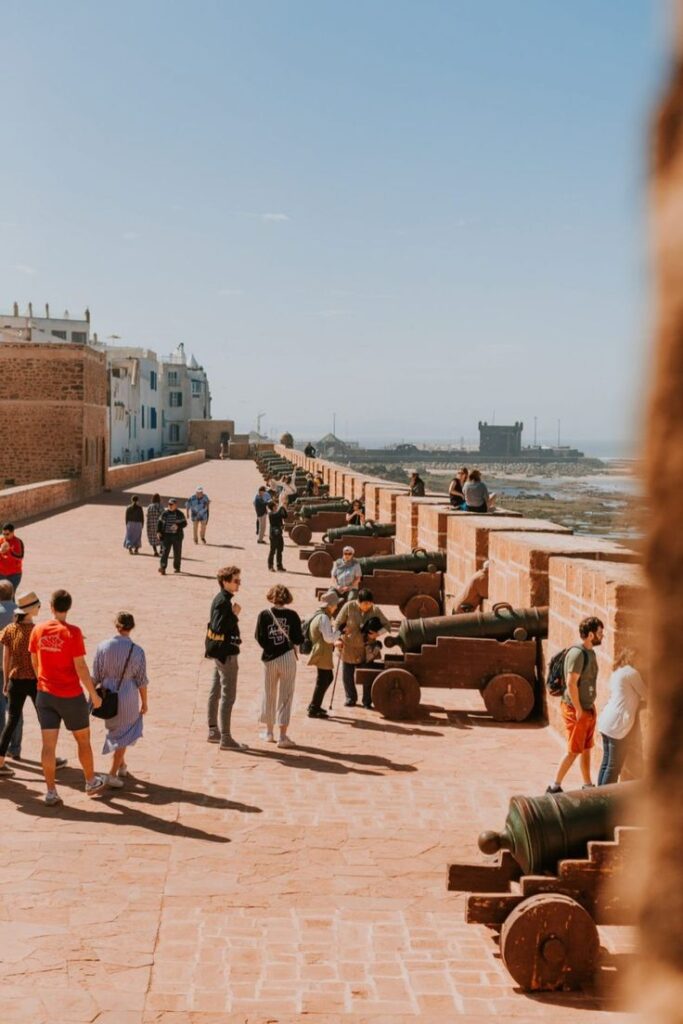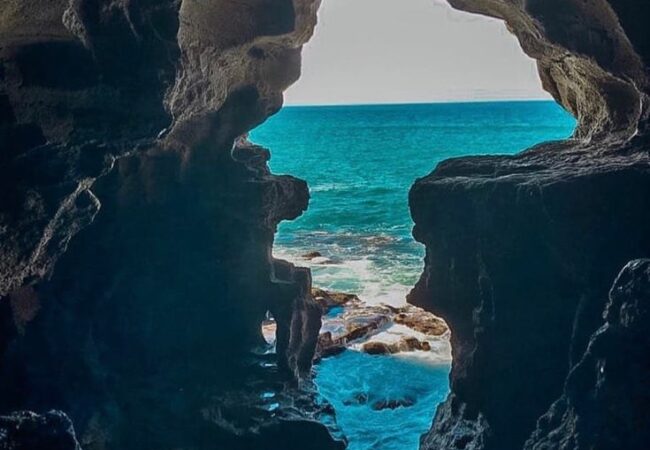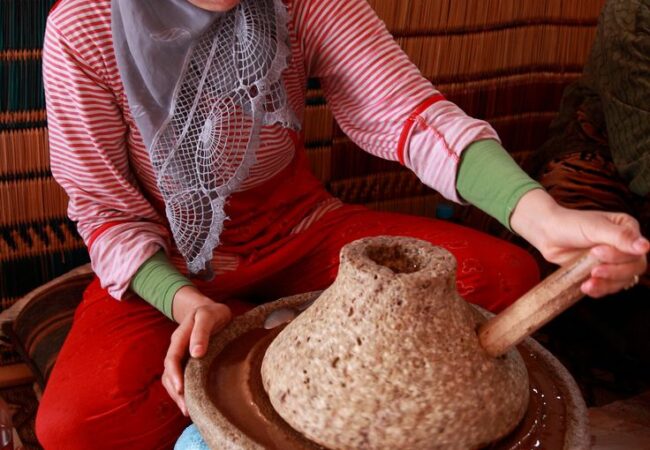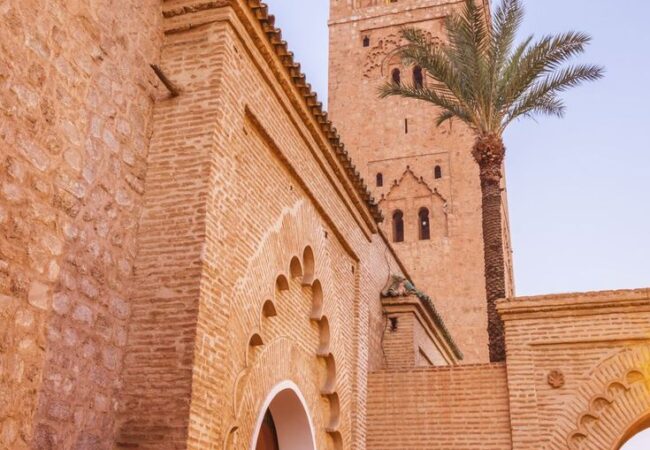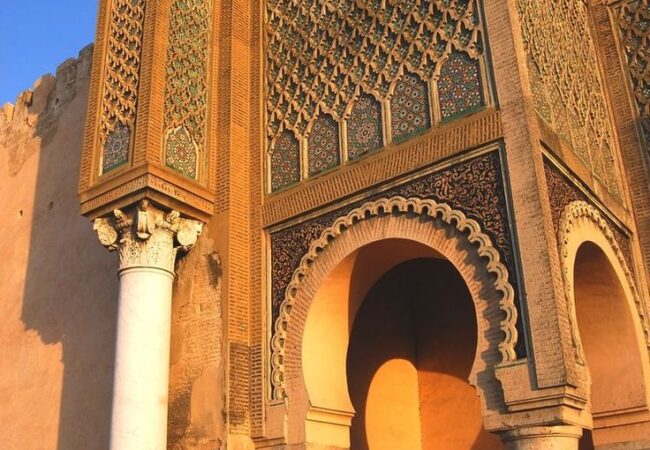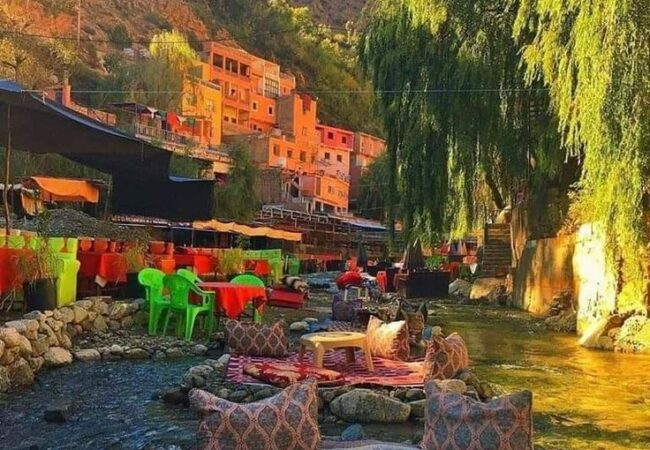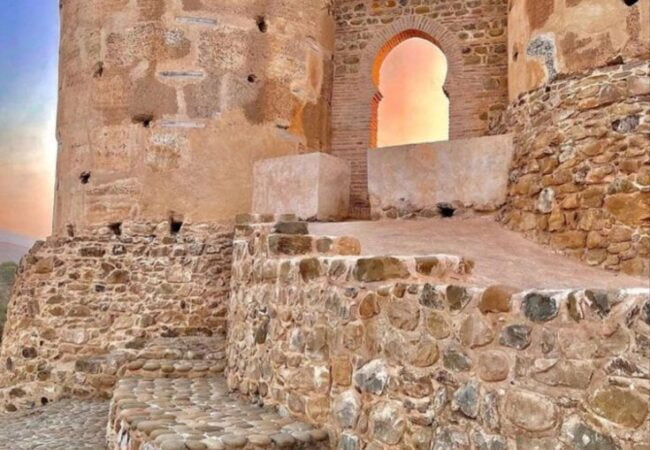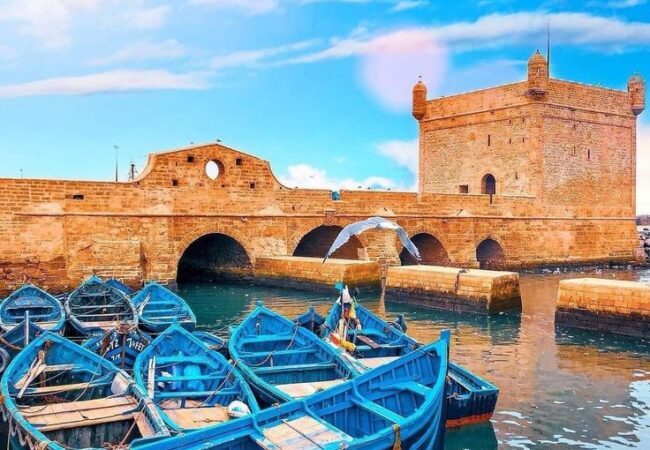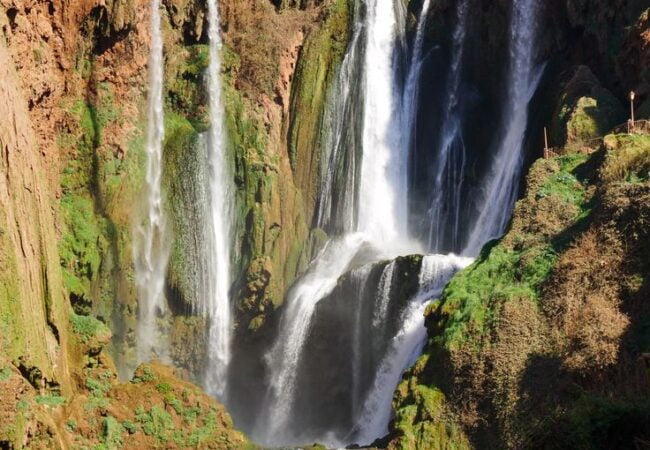Experience Essaouira: The Ultimate Moroccan Coastal City
Nestled on the Atlantic coast of Morocco, Essaouira, formerly known as Mogador, is a city that captivates with its rich history, vibrant culture, and breathtaking shorelines. This enchanting coastal city offers a unique blend of picturesque beauty, historical depth, and cultural diversity, making it an essential destination for those exploring Morocco. Its well-preserved medina, a UNESCO World Heritage site, along with the soothing sea breeze and the serene blue of its surrounding waters, sets Essaouira apart as a tranquil yet intriguing escapade from the hustle and bustle of Morocco’s bigger cities.
The article will delve into the fascinating history of Essaouira, tracing its roots back to when it was known as Mogador and highlighting the various cultures that have influenced its development. Further exploration will reveal the diversity and richness of the cultural influences that have shaped Essaouira into the city it is today. Key attractions within the city, including its bustling medina, majestic walls, and vibrant ports, will be showcased, along with a guide to engaging activities and experiences that visitors can enjoy. Through this journey, readers will gain a comprehensive understanding of why Essaouira, or Essaouria as it is also known, is not just a destination but an experience.
History of Essaouira
Ancient Origins
Archaeological evidence indicates that Essaouira has been inhabited since prehistoric times, with the bay partially sheltered by the island of Mogador, creating a peaceful harbor protected against strong marine winds. The strategic location was recognized early on, with Hanno the Navigator, a Carthaginian explorer, visiting in the 5th century BCE and establishing a trading post named Arambys.
The region gained prominence under the Berber king Juba II around the end of the 1st century BCE or early 1st century CE, who established a Tyrian purple factory to process murex and purpura shells found in the intertidal rocks at Essaouira and the Iles Purpuraires. This factory produced the dye for the purple stripe in the togas worn by the Senators of Imperial Rome, marking Essaouira as a significant site in ancient trade networks.
Portuguese Era
In the early 16th century, the Portuguese, under King D. Manuel I, built a fortress named Castelo Real de Mogador in 1506 as part of their efforts to control the Moroccan coast. This was one of six fortresses built by the Portuguese along the Atlantic coast, but it fell to local resistance led by the Regraga fraternity in 1510, four years after its establishment. Despite the Portuguese efforts, their control over the area was short-lived, and they had to abandon most of their settlements by the mid-16th century, although they managed to retain Ceuta, Tangier, and Mazagan.
Foundation of Modern Essaouira
The city of Essaouira as it is known today began to take shape in the mid-18th century under the direction of the Moroccan King Mohammed III. Recognizing the changing dynamics of global trade routes, Mohammed III aimed to reorient his kingdom toward the Atlantic for increased exchanges with European powers, choosing Mogador as a key location. This initiative included establishing a harbor at the closest point to Marrakesh and cutting off trade from Agadir in the south, which had been favoring a political rival. The king enlisted a French engineer, Théodore Cornut, along with several Moroccan and European architects and technicians, to build the fortress and city along modern lines over a period of 12 years. Cornut, in particular, designed the Kasbah area, corresponding to the royal quarters and the buildings for Christian merchants and diplomats. The name of the city evolved from “Souira” (“the small fortress”) to “Es-Saouira” (“the beautifully designed”), reflecting its new status as a major international trading seaport, linking Morocco and its Saharan hinterland with Europe and the rest of the world.
Cultural Influences and Diversity
Essaouira, a city with a storied past, has been a melting pot of cultures, influenced by its history of occupation and trade. From the Phoenicians to the Romans, and later the Portuguese and French, each era has contributed to the city’s rich cultural tapestry. The architectural landscape of Essaouira, with its blend of Moroccan and European styles, serves as a testament to its diverse heritage, embodying the city’s multicultural identity.
Jewish Heritage
- Historical Significance: The Mellah, or Jewish Quarter, stands as a symbol of Essaouira’s cultural plurality. Established in the mid-18th century, it was home to a thriving Jewish community that constituted 40 percent of the city’s population at its zenith. The Mellah was integral to Essaouira’s economic development, showcasing the peaceful coexistence of Jews and Muslims within the city.
- Architectural Evidence: The quarter’s architecture, a hybrid of Moorish and Art Deco styles, features residential buildings adorned with the Star of David, synagogues, and a Talmud school. These elements highlight the centuries-long Jewish presence in Essaouira and its importance to the city’s cultural fabric.
- Preservation Efforts: In recent years, efforts have been made to document and preserve the Mellah’s history. Initiatives like the World Monuments Fund’s documentation project and the web exhibit “Mapping the Mellah of Essaouira” aim to raise awareness of Morocco’s cultural plurality and the Jewish community’s impact on Essaouira.
European and Moroccan Blend
- Influence on Architecture: The harmonious blend of Moroccan and European architectural styles in Essaouira is not merely aesthetic but also symbolic of the city’s multicultural identity. This amalgamation is evident in the charming buildings, archways, and ornate doors throughout the city, each narrating the story of Essaouira’s past.
- Cultural Layering: Essaouira’s position as a prized port has attracted Romans, Portuguese, Spanish, and French influences over two thousand years, contributing to the city’s unique blend of Berber, Arab, and European cultures. This layering is reflected in Essaouira’s language, architecture, and the very essence of its identity.
- Legacy of Tolerance: The city has long been a beacon of tolerance, exemplified by the coexistence of its Jewish and Muslim communities. The Mellah, once a bustling Jewish quarter, remains a pilgrimage site for many, symbolizing Essaouira’s enduring spirit of cultural harmony.
In summary, Essaouira’s cultural influences and diversity are deeply ingrained in its history, architecture, and community life. The city stands as a living museum of cultural fusion, where the past and present coalesce to tell the story of a vibrant, multicultural society.
Top Attractions in Essaouira
Medina and Souqs
The heart of Essaouira’s charm lies within its walled medina, a UNESCO World Heritage site renowned for its narrow streets, vibrant markets, and the hustle of street vendors. Visitors can immerse themselves in the hassle-free souqs, where an array of local crafts, spices, and artwork awaits. This historic center is not only a feast for the senses with its colorful galleries but also a testament to the city’s rich cultural tapestry, blending Moroccan tradition with artistic expression.
Essaouira Beach
A wide, sandy expanse beckons visitors to Essaouira Beach, ideal for long walks and kitesurfing adventures. While the strong winds may challenge sunbathers and swimmers, the beach’s vastness and beauty remain undeniable. To the south, a 2km arc of sandy beach stretches from the fishing port, lined with a promenade perfect for leisurely strolls. For those seeking more thrill, the beach’s consistent winds make it a hotspot for water sports like windsurfing and kitesurfing, with schools available for beginners and enthusiasts alike.
Port of Essaouira
The bustling Port of Essaouira, a large working harbor, offers an authentic glimpse into the daily life of local fishermen. The sight of sea-blue wooden boats, the sounds of nets being mended, and the aromatic mix of the day’s catch create a lively and atmospheric experience. For culinary adventurers, the port’s pop-up food stalls serve fresh, local seafood, providing a taste of Morocco’s unique flavors and cooking traditions right at the source.
Skala de la Ville
Skala de la Ville, or the city wall, stands as one of Essaouira’s most iconic attractions. This 18th-century fortress offers breathtaking views of the Atlantic Ocean and the medina from its ramparts. Visitors can explore the Skala for a modest entrance fee, walking along the walls to spot the island of Mogador and the row of bronze cannons, a reminder of the city’s historical defenses. Fans of Game of Thrones might recognize these ramparts as the backdrop for Astapor, adding a cinematic layer to the visit. The Skala de la Ville not only offers a unique perspective on Essaouira’s architecture and history but also serves as a prime location for sunset watching, capturing the magical interplay of light and shadow over the ocean and city.
By exploring these top attractions, visitors to Essaouira can experience the essence of this Moroccan coastal city, from its historical fortifications and lively markets to its beautiful beaches and vibrant port. Each site offers a unique window into the city’s soul, blending natural beauty with cultural richness.
Activities and Experiences
Water Sports
Essaouira, renowned for its vibrant water sports scene, offers a plethora of activities for enthusiasts and beginners alike. The city’s long, sandy beaches and consistent winds create the perfect conditions for windsurfing and kitesurfing. With numerous schools and rental shops available, visitors have the opportunity to either learn these exhilarating sports or enhance their skills. Beyond windsurfing and kitesurfing, the clear blue waters around Essaouira also invite visitors to engage in swimming, snorkeling, and kayaking, providing a comprehensive water sports experience.
Art and Crafts
The artistic soul of Essaouira is palpable in its medina and beyond. This coastal city has become a haven for artists and artisans, drawing creative minds from around the globe. The medina, in particular, is a treasure trove of workshops and galleries where local craftspeople, including wood carvers, metalworkers, weavers, and potters, showcase their talents. Visitors can witness these artisans at work, creating unique handmade souvenirs that capture the essence of Moroccan craftsmanship. The city’s art scene is further enriched by its diverse artistic styles, most notably the Naive Style and Calligraphy, which depict the daily life and rich cultural heritage of Essaouira.
Festivals and Events
Essaouira’s cultural calendar is dotted with vibrant festivals and events that celebrate its rich heritage and artistic vibrancy. The Gnaoua World Music Festival, held each June, stands out as a highlight, bringing together Gnaoua musicians and international artists for a spectacular celebration of music and culture. In addition to this, the Andalusian Music Festival and the Essaouira Vis’à Vis Festival offer visitors a glimpse into the contemporary art and music scene of the city. These events not only showcase the town’s cultural diversity but also provide an immersive experience into the local traditions and global connections that shape Essaouira.
Conclusion
Through this exploration of Essaouira, we’ve journeyed through the city’s rich tapestry of history, culture, and scenic beauty, from its ancient origins and diverse cultural influences to its lively markets, expansive beaches, and vibrant festivals. Each aspect of the city, whether it be its UNESCO-protected medina, the historical significance of the Mellah, or its standing as a haven for water sports enthusiasts, contributes to a multifaceted experience that embodies the essence of Moroccan charm and diversity. In essence, Essaouira stands not just as a destination but as an unfolding story that captivates the imagination and beckons for deeper exploration.
The allure of Essaouira, with its blend of cultural heritage, architectural marvels, and natural beauty, offers a unique glimpse into the soul of Morocco. It invites visitors to immerse themselves in an experience that transcends the ordinary, highlighting the city’s role as a bridge between the past and the present. As we conclude, Essaouira emerges as a symbol of tolerance, creativity, and enduring beauty, encouraging further discovery and understanding of its rich cultural landscape. In this light, the city not only enriches the wanderlust spirit but also underscores the vibrancy of Moroccan culture and its open invitation to the world.
FAQs
Is it worth making a trip to Essaouira, Morocco?
Absolutely, Essaouira is a fantastic destination that is well worth exploring. If you’re considering a visit, we have some top tips to make your trip memorable, including advice on the best times to visit.
How much time should you spend in Essaouira, Morocco?
While it’s possible to enjoy a week or even extend your stay for months in Essaouira, many tourists find that a single day is sufficient to get a taste of “Africa’s Windy City.” It’s a popular day trip from Marrakech, which is just a 3-hour drive away.
Is it possible to swim in the sea at Essaouira?
The wide, sandy beach of Essaouira is perfect for walks and kitesurfing. However, swimming and sunbathing might be challenging due to strong winds. For safer swimming conditions, stick to the town’s beach area, as the Plage Safi to the north has dangerous currents.
What makes Essaouira famous?
Essaouira is known as the “Windy City of Africa” because of the strong Atlantic breezes it receives, making it a prime spot for kite-surfers. The wind intensity reduces significantly around September and October, making it even more pleasant.


